A well-organized fire watch keeps a close eye on structures during risky activities or while fire protection impairments are corrected
So, the fire marshal issued the dreaded order: your property needs a fire watch. This is often done when a fire alarm, fire sprinkler, standpipe, or other fire protection system is out of service due to damage or scheduled maintenance.
Fire watches can feel overwhelming to many property owners and they can also be expensive, given the diversion of manpower or hiring of outside contractors to keep a watchful eye on the building. But the execution of one while a fire protection system is undergoing quick repairs or revisions should be straightforward—when it’s organized properly.
In this blog, we shed light on this oft-misunderstood and underappreciated fire prevention technique, including when fire watches are needed and who should carry them out. And we will dig into the details of what’s required so building owners can execute a fire watch with confidence and in compliance with codes, standards, and laws.
Interested in learning about fire watches because your fire protection system needs repairs? Be sure to check out our selection of fire sprinkler heads, fire sprinkler tools, fire protection valves, pipe and accessories, standpipe components, and much more.
Why would I need a fire watch?
The 2018 edition of NFPA 101: Life Safety Code (3.3.108) defines a fire watch as the assignment of one or more people to the following tasks:
- Notifying the fire department and building occupants to an emergency
- Preventing a fire from occurring
- Extinguishing small fires
- Protecting the public from fire or life safety dangers
NFPA standards and the International Fire Code (IFC) maintain four reasons property owners may be required to implement a fire watch:
Fire Watch Reason 1: A building’s fire alarm, fire sprinkler, or fire suppression system is impaired, or an outage is preplanned that’s expected to last a significant amount of time
NFPA 25: Standard for the Inspection, Testing, and Maintenance of Water-Based Fire Protection Systems classifies an impairment as a serious issue that threatens life safety by rendering all or part of a fire protection system inoperable until it’s repaired (3.3.21). A property is rarely more vulnerable to catastrophic fire loss than when a fire protection system or a portion of a system is out of order.
Whether the impairment is caused by an emergency situation such as a ruptured pipe or is part of preplanned repairs, testing, or maintenance doesn’t matter. NFPA 25 Handbook: ITM of Water-Based Fire Protection Systems asserts that many devastating fires could have been avoided if a proper impairment program had been implemented that:
- Identified the risks created by the impairment
- Established a fire watch and back-up fire protection
- Mitigated ignition sources and/or shut down hazardous processes
- Expedited repairs
- Ensured that the fire protection system was properly restored to service
To learn more about determining the urgency of issues discovered during ITM of fire protection systems and the steps property owners must follow if impairments are discovered, read our previous blog: “Standpipe and Fire Sprinkler Inspections: Classifying Deficiencies and Impairments.”
The local authority having jurisdiction (AHJ), often a fire marshal, ultimately determines whether a fire watch is needed for parts of a property left unprotected by an impairment. Its decision is based on factors that include the level of impairment, the amount of time the system might be out of service, the type of hazard without protection, the potential for an uncontrolled fire, and any risk to the community.
NFPA standards require property owners to report impairments to the AHJ if the system will be out of service for a significant amount of time within a 24-hour period—even if the hours are not consecutive.
NFPA 72: National Fire Alarm and Signaling Code mandates that AHJs must be informed if fire alarm systems are inoperable for more than eight hours so appropriate mitigating measures can be determined, from simple occupant notification to fire watches. In the case of alarms, AHJs also weigh the occupancy type, the duration of the impairment, the building occupancy level during the impairment period, whether active work is being conducted on the fire alarm system during the impairment, the condition and features of other fire protection systems, and the assets at risk.
NFPA 25’s fire watch requirements for water-based fire protection systems may be triggered if the system or its components are out of service for more than 10 hours in a 24-hour period—regardless of the nature of the impairment:
From the 2017 edition of NFPA 25
15.5.2 Where a fire protection system is out of service for more than 10 hours in a 24-hour period, the impairment coordinator shall arrange for one of the following:
(a) Evacuation of the building or portion of the building affected by the system out of service
(b) *An approved fire watch
(c)* Establishment of a temporary water supply
(d)* Establishment and implementation of an approved program to eliminate potential ignition sources and limit the amount of fuel available to the fire
Many AHJs maintain even tougher standards, requiring fire watches, building evacuations, or standby firefighters with ready apparatus if fire protection systems are out of service for more than 4 hours in a 24-hour period. To most property owners, fire watches are a gentler requirement than building evacuations, which can be disruptive to business.
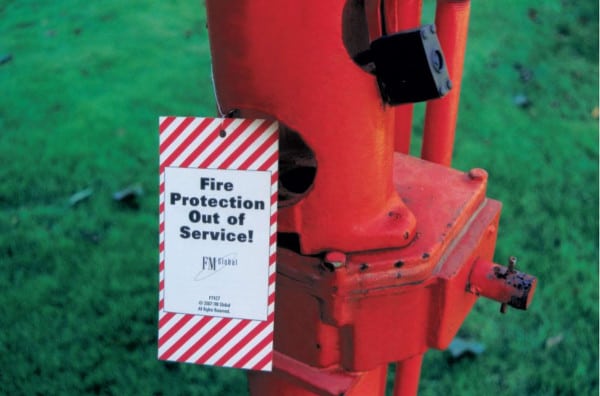
Reason 2: Hot work will be occurring in the building
While “hot work” is most typically associated with welding and cutting, it can mean any type of work that produces a spark or flame, including using a torch or grinding. Hot work is a leading cause of industrial fires and has triggered many other building fires as well, such as this massive 2017 blaze in Brighton, Colo. that destroyed three businesses. Watch the news clip below to see the devastation caused by welding work in an auto body shop in the building:
Between 2013 and 2017, U.S. fire departments responded to an annual average of 4,630 fires incited by hot work, NFPA reports, causing an average of 15 deaths, 198 injuries, and $355 million in direct property damage every year.
Hot work can throw sparks and molten material more than 35 feet during welding, cutting, and grinding. These sparks and hot slag are typically burning above 1,000°F—more than enough to easily ignite paper, wood, flammable liquids, vapors, and any other combustibles in the area.
Unfortunately, there are few locations in the average facility that consistently lack combustible materials within 35 feet in all directions. Cracks in floor openings and ducts can transmit sparks to hidden locations as well. The intense heat generated by hot work can also ignite nearby combustibles, such as walls with combustible coverings or insulation.
Fire watches are required during any hot work activity and for at least 30 minutes after the work is completed in order to reduce the potential for ignitions and large fire losses. There’s a single exception: when there are no fire hazards or combustible materials in the hot work area.
From the 2018 edition of IFC
3504.2 Fire watch. Fire watches shall be established and conducted in accordance with Sections 3504.2.1 through 3504.2.6.
3504.2.1 When required. A fire watch shall be provided during hot work activities and shall continue for not less than 30 minutes after the conclusion of the work. The fire code official, or the responsible manager under a hot work program, is authorized to extend the fire watch based on the hazards or work being performed. Exception: Where the hot work area has no fire hazards or combustible exposures.
3504.2.2 Location. The fire watch shall include the entire hot work area. Hot work conducted in areas with vertical or horizontal fire exposures that are not observable by a single individual shall have additional personnel assigned to fire watches to ensure that exposed areas are monitored.
3504.2.3 Duties. Individuals designated to fire watch duty shall have fire-extinguishing equipment readily available and shall be trained in the use of such equipment. Individuals assigned to fire watch duty shall be responsible for extinguishing spot fires and communicating an alarm.
3504.2.4 Fire training. The individuals responsible for performing the hot work and individuals responsible for providing the fire watch shall be trained in the use of portable fire extinguishers.
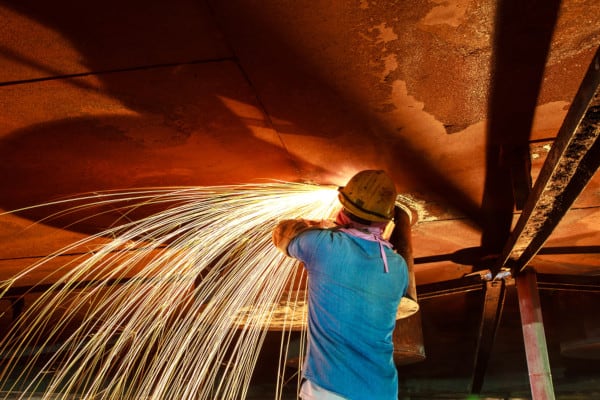
Reason 3: During construction or demolition of a building
Construction fires account for less than 2 percent of U.S. structure fire responses and 3.2 percent of annual losses, according to a Fire Engineering magazine report. But their economic impact is estimated at $310 million a year, including abandoned projects, environmental damage, and increased insurance costs.
Fires can quickly spiral out of control on construction or demolition sites since fire alarms and fire sprinklers aren’t connected, water supplies may be shut off, and sparks from power tools can ignite nearby combustible materials.
In January 2019, the International Code Council (ICC) approved changes to the 2021 edition of the International Fire Code (IFC) designed to better safeguard construction sites. Chief among the coming changes is a mandatory fire watch during nonworking hours for new construction taller than 40 feet or with an aggregate area exceeding 50,000 square feet. Fire Engineering reports that these buildings were deemed “large enough to create a significant loss to the community, endanger firefighters, and consume resources” if they burn.
Currently, AHJs can mandate fire watches during hazardous construction or demolition activities such as temporary heating or hot work, or during nonworking hours when new construction exceeds 40 feet in height. Temporary heating devices are important to monitor on construction and demolition sites because materials are constantly being moved, potentially creating unsafe clearances.
From the 2018 edition of IFC
3304.5 Fire watch. Where required by the fire code official or the prefire plan established in accordance with Section 3308.3, a fire watch shall be provided for building demolition and for building construction that is hazardous in nature, such as temporary heating or hot work.
3304.5.1 Fire watch during construction. Where required by the fire code official, a fire watch shall be provided during nonworking hours for new construction that exceeds 40 feet (12 192 mm) in height above the lowest adjacent grade.
3304.5.2 Fire watch personnel. Trained personnel shall be provided to serve as an on-site fire watch. Fire watch personnel shall be provided with no fewer than one approved means for notification of the fire department, and the sole duty of such personnel shall be to perform constant patrols and watch for the occurrence of fire. The combination of fire watch duties and site security duties is acceptable. Fire watch personnel shall be trained in the use of portable fire extinguishers.
3304.5.3 Fire watch location and records. The fire watch shall include areas specified by the prefire plan established in accordance with Section 3308.3. The fire watch personnel shall keep a record of all time periods of duty, including a log entry each time the site was patrolled and each time a structure under construction was entered and inspected. The records and log entries shall be made available for review by the fire code official upon request.
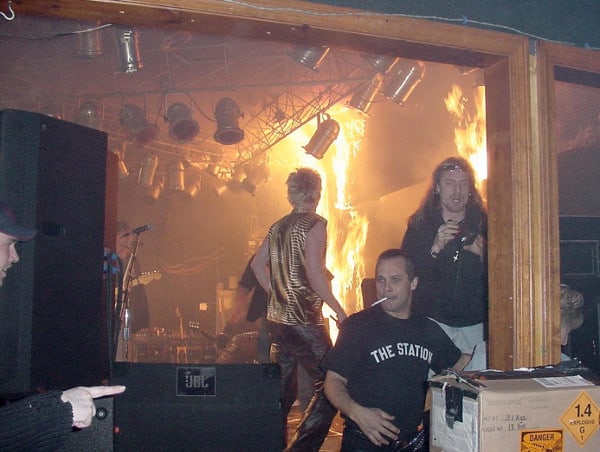
Reason 3: Dense crowds are expected during events in public assembly buildings
Few can forget the painful lessons of The Station nightclub fire in 2003, when sparks from a pyrotechnic display caused soundproofing material to burst into flames during a concert. More than 460 fans had crowded into the Rhode Island nightclub to enjoy a heavy metal band. Four minutes after the fire started, the unsprinklered, wooden building was engulfed in flames. In the chaos that ensued, 100 people were killed and 200 more were injured.
Fire codes permit AHJs to require fire watches for extra crowd protection in public assembly buildings based on the number of people gathered or the nature of the event.
From the 2018 edition of IFC
403.12.1 Fire watch personnel. Where, in the opinion of the fire code official, it is essential for public safety in a place of assembly or any other place where people congregate, because of the number of persons, or the nature of the performance, exhibition, display, contest or activity, the owner, agent or lessee shall provide one or more fire watch personnel, as required and approved. Fire watch personnel shall comply with Sections 403.12.1.1 and 403.12.1.2.
403.12.1.1 Duty times. Fire watch personnel shall remain on duty while places requiring a fire watch are open to the public, or when an activity requiring a fire watch is being conducted.
403.12.1.2 Duties. On-duty fire watch personnel shall have the following responsibilities:
1. Keep diligent watch for fires, obstructions to means of egress and other hazards.
2. Take prompt measures for remediation of hazards and extinguishment of fires that occur.
3. Take prompt measures to assist in the evacuation of the public from the structures.
How do I conduct a fire watch?
In a nutshell, a fire watch consists of one or more trained personnel charged with maintaining life safety by continuously patrolling all areas of a property affected by an impairment or other fire watch condition. If smoke, fire, or other abnormal conditions are spotted, the fire watcher must immediately contact emergency personnel, alert building occupants, and help evacuate the building.
The main responsibilities of a fire watch include:
- Searching diligently for fires
- Immediately addressing any hazards that are discovered
- Controlling fire ignition sources
- Making sure there’s adequate means of egress and removing any obstructions
- Making sure other alarm systems are functioning properly
- Standing ready to contact the local fire department
- Standing ready to extinguish any fires using a portable fire extinguisher or hose
- Alerting occupants to hazardous conditions that require evacuation
- Documenting patrols at least once every hour
Fire watch patrols should systematically cover the impacted area every hour, documenting their findings at the completion of each round. It’s important to note that fire watchers’ responsibilities don’t stop with occupied areas of a building. They must also check unoccupied areas such as storage rooms, crawl spaces, and concealed places.
Fire watchers should be trained to understand hazards at the site and the nature of any hot work being conducted. They should have the authority to stop hot work if unsafe conditions develop as well. They must also be trained on how to fill out fire watch log sheets since fire codes require the thorough documentation of all activities associated with a fire watch.
Fire watchers should know the location of manual fire alarm stations and understand the sequence of events required for fire response and sounding alarms. They must have formal training in the proper use of emergency safety equipment and be able to easily access it. That said, fire watchers should only attempt to extinguish a fire if it’s plausible with the available equipment.
Failure to complete these guidelines can cause the local AHJ to impose fines or require building evacuations until fire watch conditions are resolved.
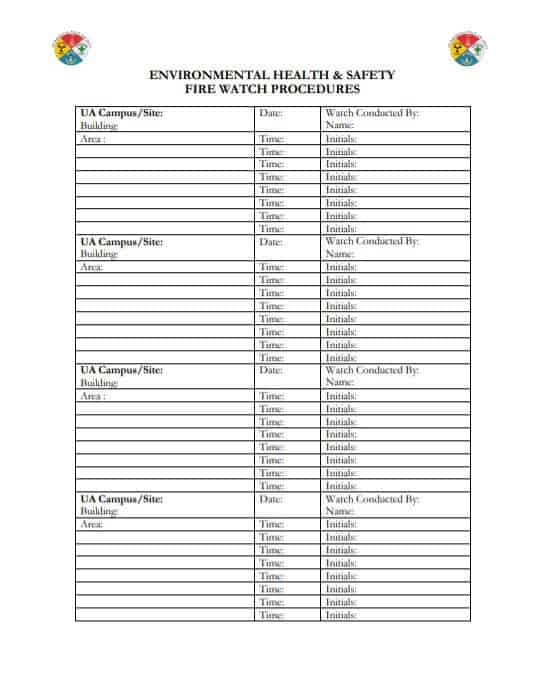
Who can conduct a fire watch?
Building owners essentially have two options for performing fire watches: using building staff or outsourcing the responsibility to a security company or fire protection contractor. For instance, the University of Alabama’s policy asserts that contractors should be responsible for fire watches if any work they perform on a fire protection system requires them to take it offline.
To best perform their duties, people assigned to a fire watch should be familiar with the building or premises and have access to all areas. They should have received formal training in the proper use of fire extinguishers and other emergency fire protection equipment, and they should fully understand emergency evacuation procedures, safety plans, and alarm activation procedures.
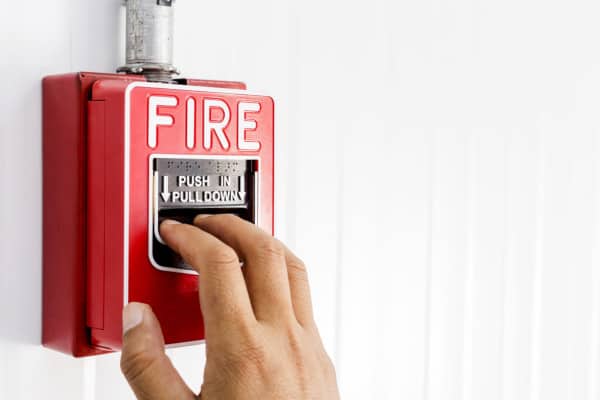
IFC (3304.5.2) permits fire watchers to simultaneously perform security duties on construction sites. But in all other instances, people assigned to a fire watch must forego all other responsibilities while it’s in progress. That means employees who typically perform maintenance duties can’t perform one while cleaning floors, and security guards working the door at public events can’t also be asked to keep an eye out for fires. This is an important consideration because fire watches must be conducted continuously during an outage—and potentially for an extended period of time.
Property owners who aim to assign fire watch duties to employees should follow the federal Occupational Safety and Health Administration (OSHA) requirements (1915.504). Besides requiring detailed training in how to conduct a fire watch, OSHA requires employers to develop and maintain a written policy that includes:
- The duties employees must perform
- The equipment they need
- The personal protective equipment (PPE) they must wear
Assigning fire watch duties to building staff instead of hiring security companies or contractors typically costs less up front and ensures fire watchers are familiar with the property. But property owners should carefully weigh these advantages against the cost of lost productivity when employees are removed from their regular duties, training and equipment costs, and potential legal liabilities if fire watches aren’t covered by a building’s insurance policy.
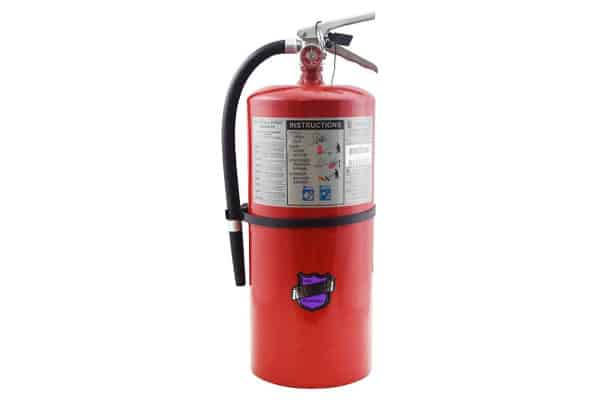
Fire watch: the end is in sight
In the broadest strokes, fire watches must remain in effect until the conditions that sparked the AHJ to require them are resolved. If a fire watch was mandated by an impairment to a fire sprinkler system, it must continue until the system is restored to proper working order, any necessary inspections and tests are completed, and the fire department has been notified.
Hot work-related watches can be terminated a half-hour after any fiery activity is finished. Watches prompted by heavily attended events can be ceased after the event is over and the crowd has dispersed. Construction-related watches are ongoing until work is completed.
The order to perform a fire watch often fills building owners with dread. But with a little pre-planning, fire watches can be simple and painless to carry out—ensuring life safety levels remain consistently high on a property.
Interested in learning about fire watches because your fire protection system needs repairs? If you need quality fire protection products quickly, check out our selection of fire sprinkler heads, fire sprinkler tools, fire protection valves, pipe and accessories, and much more.
For more information about QRFS products, call us at +1 (888) 361-6662 or email support@qrfs.com.
This blog was originally posted at blog.qrfs.com. Check us out at Facebook.com/QuickResponseFireSupply or on Twitter @QuickResponseFS.


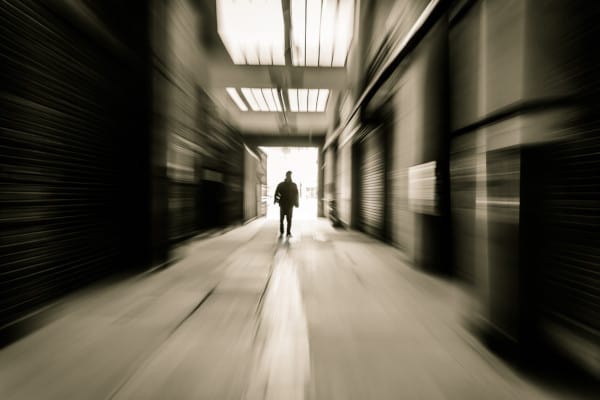
Everyone has some basic questions about fire and its safety, your topic is really nice to help others, because it first asks a question and then answers really helps for the understanding of prevention from fire damages.
How many hours can one fire watcher be on duty straight?
Paul — We are unsure of any references to hour-cap limitations in the IFC, but there are likely OSHA requirements that govern this. You might try contacting OSHA or your local authority having jurisdiction (fire marshal) to find the answer. Thanks for reading.
Does the fire watch form need to be submitted to fire department after, or is it kept for internal records?
Justin — Section 3305.5.4 in the 2021 edition of the IFC specifies that records must be kept “of all time periods of duty, including the log entry for each time the site was patrolled and each time a structure was entered and inspected.”
Further, it specifies that “Records shall be made available for review by the fire code official upon request.”
That said, the IFC is a model code, and local codes and requirements may differ a little. So be sure to check with your local authority having jurisdiction to verify their procedures. Thanks for reading!
Does a fire watch for a specific area of a building which is occuopied but does not have active fire alarm or sprinkler require the fire watcher to be continuously present in these spaces or is periodic presence ( once per hour ) sufficient ?
The IFC references are unclear and may seem to conflict with each other (section 3504.2.2 Location. implies constant watch where hot work is taking place and specifies getting additional personnel to achieve coverage, whereas sections 3304.5.2-3304.5.3 mention patrols). We suggest you contact your local authority having jurisdiction to deem what procedures and personnel will meet their requirements.
if a multi family building has smoke detectors and the sprinkler system goes down do we need to do a fire watch ?
Bryan — If the sprinkler system is down for more than 10 hours in a 24-hour period and subject to NFPA 25, very possibly. Ultimately, it is a decision made by the AHJ; please contact your local fire inspector. If a sprinkler system is down in a multi-family building and no one takes steps to remedy it, that is a problem, especially if a fire happens that it could have stopped. And regardless, an impaired system must be addressed ASAP.
If our fire suppression system is not working but the alarm still goes the the fire department Do we need a fire watch if the building is unoccupied
Joseph — The ultimate answer to your question is that the AHJ (fire department; fire inspector) determines if and when you need a fire watch. We don’t completely understand the situation you describe, however—the audible/visual alarms aren’t working, or the whole system isn’t but it’s still sending an alarm signal to the fire department? If so, that definitely requires communication with both the fire department and a technician, the the former will determine whether you need a fire watch or other measures. Best of luck!
While preforming fire watch duties can fire watch sit in a chair
Eric – We can’t answer this definitively as we don’t know what space is being fire watched. But the principle of ensuring nothing catches fire in a building requires fire watchers to walk around and patrol the area. Contact your local authority having jurisdiction (e.g. fire marshal) and they can outline the requirements. Thanks for reading!
If we are in a commercial/residential building doing construction for a new business and the commercial building has been put on firewatch before we started construction, then we take our suite offline during demolition, would our suite being offline cause the rest of the building to fail their Reg 4 testing? Or would our suite just be offline and the rest of the building could still pass their reg 4 testing?
Our building we’re in have been in legal with Fire department and they’re trying to get us to pay for all the fire watch for the entire building claiming we made them fail their testings.
Joshua — Honestly, we aren’t sure:
1. We aren’t sure what “Reg 4 testing” is (that sounds like a local regulation specific to your area).
2. Unfortunately, it sounds as though you have a somewhat complicated and specific legal interpretation question, and only qualified attorneys should offer guidance there.
Your best bet is to consult with a local attorney who has experience with code enforcement issues and liabilities among contractors/building owners/AHJs. Thanks for reading.
Could numerous battery operated smoke detectors be installed temporarily in an enclosed concrete exit fire sprinklered stairwell high rise condo which could communicate via wifi and a third party monitoring service provider qualify? That would provide 24 hr round the clock in real time monitoring. Remote cameras could also be added in various locations in the enclosed stairwell via WiFi. Hiring a firewatch individual for weeks on end during a change out of a fire alarm system in a fully fire sprinkler structure would be unnecessary if a suitable option, as described, offered instantaneous monitoring. There has to be some logical alternatives in this day of technology.
Darrell — This is a good question (and a good proposal). We can’t comment on whether anything like that would be definitively acceptable in terms of the specific rules on fire watches (codes and standards), but many aspects of fire protection are subject to the approval of an authority having jurisdiction (AHJ), who can review something and exercise discretion in approving “alternative methods” that accomplish the fire protection goals. Your point about technology is something to consider! Thanks for the comment.
Excellent resource on fire watch procedures! The article is well-researched and provides clear, actionable insights on requirements. A must-read for anyone in fire safety management.
Can a person perform firewatch duties while also performing hole watch duties in the same space? if so, how do they see the fire or put it out if they cannot enter the space?
Kimberly — We can’t comment, as we’ve never considered this question or hole watches, and the standards and codes aren’t explicit on an answer. Ultimately, what is considered an acceptable fire watch will vary by the space, who is covering what area, and, ultimately, the judgment of the authority having jurisdiction assessing the plan. Ideally, you should discuss this with a local AHJ and they may have a better answer. Thanks for reading and commenting!
Trying to find the code stating that a fire watch is not required in an unoccupied building at night if it is not attached to an occupied building.
Christopher — We are not aware of that exception, offhand, though it is possible that it exists. Please contact your local AHJ and ask them about fire watch procedures and local requirements. Thanks for reading.